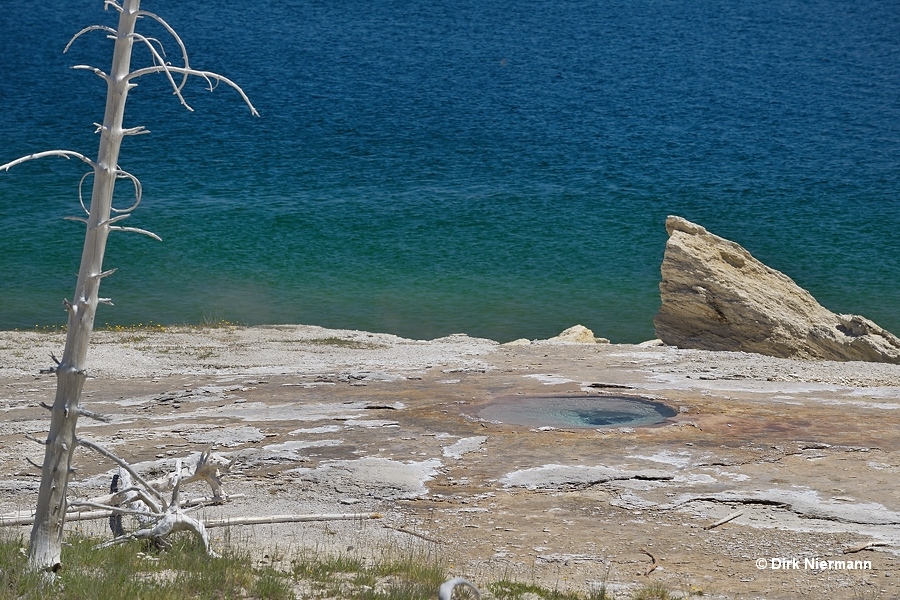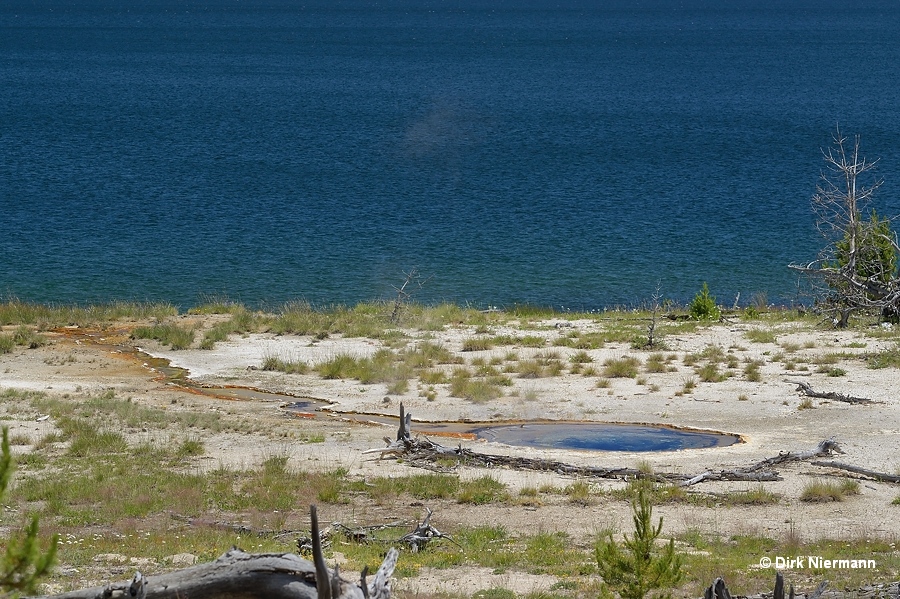West Thumb Geyser Basin, Lake Shore Group
Lake Shore Group adjoins Lower Group, the publicly accessible part of West Thumb Basin, to the north. However, except Mantrap Cone features of Lake Shore Group are not visible from West Thumb Basin Trail. To spot them, you have to head north for the next roadway turnout on the east side of the highway. Fortunately this turnout is very elongated, so there is plenty of room to observe a large section of the group. The thermal area itself is closed to public entry.

From the roadway turnout Lone Pine Geyser is the northernmost visible feature of the Lake Shore Group. The name-giving lone pine already died in 1988. With water jets up to 23 m (75 feet) Lone Pine Geyser is one of the largest geysers at West Thumb, but it erupts only once every few days.

The next notable feature to the south is Occasional Geyser. From a pretty ornamented bowl and from an elliptical pool west of it Occasional Geyser plays approximately every 30 minutes up to 3 m (10 feet) high.

South of Occasional Geyser the lake shore offers two further interesting sights, even if these springs are neither named nor listed in the RCN Database.


At a distance of circa 300 m (1000 feet) south of Occasional Geyser, Mantrap Cone forms a small peninsula. A few feet in front of the prominent structure a further unnamed, quiet spring can be spotted.

Due to the large distance to the roadway Mantrap Cone itself is only barely visible. The name of this quiet hot spring origins in the fact that in the past several fishermen, who used Mantrap Cone as a platform were burned by its hot water. Even more horrifying was the misstep of a 36-year-old fisherman from Utah in July 1939, which dispatched him into Mantrap Cone's pool, where he was scalded to death.

The boardwalk near Black Pool in the Lower Group provides a slightly better view at Mantrap Cone.

Less than 60 m (200 feet) southwest of Mantrap Cone the next named geyser appears, which is, unfortunately, not recognizable from the road. Goggle Spring, consisting of two small, connected pools, erupts rarely but still up to 2 m (6 feet) high.